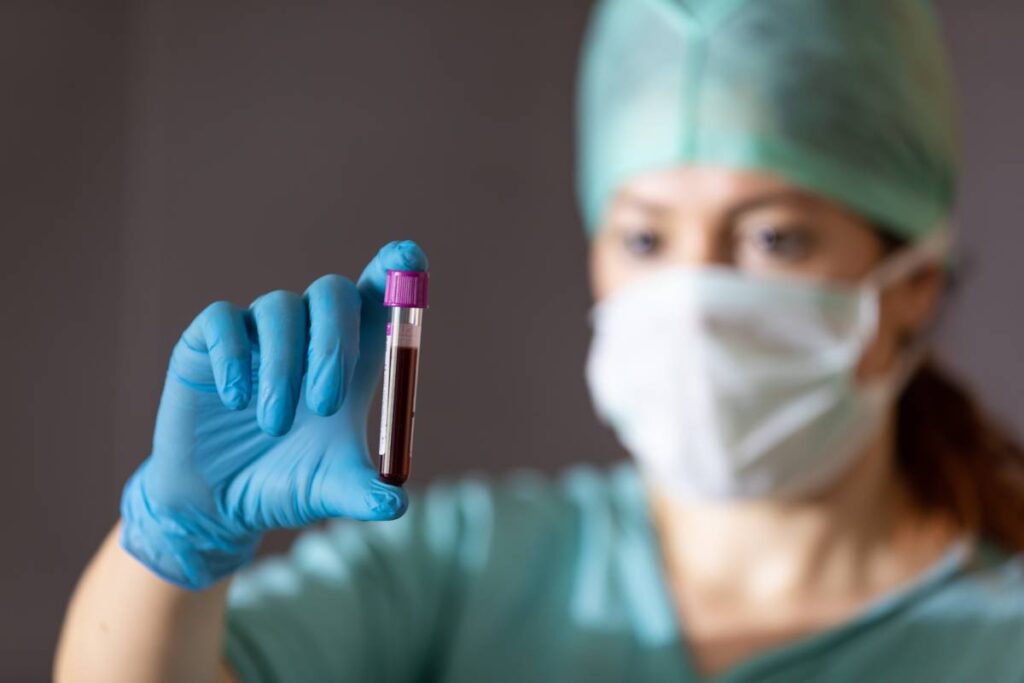The most important determinant of organ transplantation compatibility, the ABO blood type system characterizes human blood into four groups — A, B, O, and AB — based on the presence of immunological molecules within the blood. These molecules include antigens A and B, sugars located on the surfaces of red blood cells that act as markers and are recognized and targeted in blood type mismatches, as well as the anti-A and anti-B antibodies present in the plasma, which bind to their respective target antigens [1]. The four blood types include type A, which contains antigen A on the red blood cells and anti-B antibodies in the plasma; type B, which exhibits antigen B and anti-A antibodies; type O, which contains neither antigen but both anti-A and anti-B antibodies; and type AB, which exhibits both antigens but neither antibody [1]. Matching the ABO blood types of the organ donor and the recipient constitutes a critical step in organ transplantation, as the transfer of a mismatched organ causes the antibodies within the recipient’s blood to attack the antigens of the donor’s blood, resulting in a higher chance of organ rejection and mortality [2, 3]. For example, patients with type O blood cannot receive donations from any of the other blood types, while all other blood types can receive transplants from their own type as well as type O, the “universal donor.” Although type O comprises roughly 45% of the American population, finding organs for patients with this blood type presents a challenge, as the only compatible organs are often given to patients with A, B, or AB [4]. Thus, type O patients typically remain on the organ transplant waiting list for at least twice as long as patients with other ABO types and experience a roughly 20% higher chance of mortality during this disproportionately long wait [5, 6]. To rectify this major issue, researchers have begun developing a method of conversion to transform the blood types of donor organs into type O.
In 2022, researchers Wang and colleagues at the Ajmera Transplant Center in Canada demonstrated a largely successful blood type conversion of type A organs into type O by using ex vivo lung perfusion (EVLP) and enzymes. Utilizing donor lungs unsuitable for transplantation, the team used EVLP to bring the organs to body temperature and improve organ quality [7]. Then, on three lungs, the team administered two glycosidase enzymes derived from Flavonifractor plautii, a type of bacteria found in the human gut microbiome [8]. The enzymes, FpGalNAc deacetylase and FpGalactosaminidase, targeted the antigen A sugars, removing 99% and 90% of the antigens located on the red blood cells and aortae, respectively, without triggering acute lung toxicity [7]. After clearing most of the antigen from the blood in these lungs, the researchers transfused type O blood into both the treated lungs and the control group to simulate an incompatible transplant. While the untreated lungs rejected the transfusion due to the anti-A antibodies in the type O blood attacking its own A antigens, the enzymatically transformed lungs tolerated the transfusion with minimal antibody binding and injury, effectively operating as type O organs [7].
In the future, Wang and her team hope to begin clinical trials to further test the efficacy of organ ABO blood type conversion. If successful, the creation of more “universal donor” organs could significantly decrease the time spent on the waiting list and deaths among type O patients, but also patients overall. While this method remains in its early stages, the innovations of derived enzymes and EVLP in organ transformation could lead to a more equitable and efficient organ transplantation process.
References
1: Yamamoto, F., Clausen, H., White, T., Marken, J. and Hakomori, S. (1990). Molecular genetic basis of the histo-blood group ABO system. Nature, vol. 345. DOI: 10.1038/345229a0.
2: de Weerd, A. and Betjes, M. (2018). ABO-incompatible kidney transplant outcomes. Clinical Journal of the American Society of Nephrology, vol. 13. DOI: 10.2215/CJN.00540118.
3: Guggenheim, J., Samuel, D., Bismuth, H. and Reynes, M. (1990). Liver transplantation across ABO blood group barriers. The Lancet, vol. 336. DOI: 10.1016/0140-6736(90)92082-S.
4: Elflein, M. (2022). Distribution of blood types in the U.S. as of 2021. Dataset. Statista. URL: https://www.statista.com/statistics/1112664/blood-type-distribution-us/.
5: University Health Network (2022). Creating universal blood-type organs for transplant: new proof-of-concept study reveals a way to make ‘universal’ organs that could be used in all recipients regardless of blood type.” ScienceDaily. URL: www.sciencedaily.com/releases/2022/02/220216140411.htm.
6: National Health Service (2018). Annual report on cardiothoracic organ transplantation. Report. NHS Blood and Transplant. URL: https://nhsbtdbe.blob.core.windows.net/umbraco-assets-corp/12252/nhsbt-cardiothoracic-transplantation-annual-report-2017-2018.pdf.
7: Wang, A., Ribeiro, R., Ali, A., Brambate, E., Abdelnour-Berchtold, A., Michaelson, V., Zhang, Y., Rahfeld, P., Moon, H., Gokhale, H., Gazzalle, A., Pal, P., Liu, M., Waddell, T., Cserti-Gazdewich, C., Tinckam, K., Kizhakkedathu, J., West, L., Keshavjee, S., Withers, S. and Cypel, M. (2022). Ex vivo enzymatic treatment converts blood type A donor lungs into universal blood type lungs. Science Translational Medicine, vol. 14. DOI: 10.1126/scitranslmed.abm7190.
8: Rahfeld, P., Sim, L., Moon, H., Constantinescu, I., Morgan-Lang, C., Hallam, S., Kizhakkedathu, J. and Withers, S. (2019). An enzymatic pathway in the human gut microbiome that converts A to universal O type blood. Nature Microbiology, vol. 4. DOI: 10.1038/s41564-019-0469-7.
